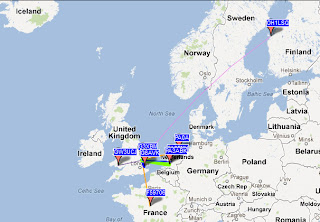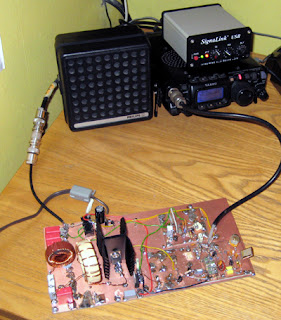 |
| IRF640 FET |
As I want to ensure the 10MHz LO signal is very stable so I can use it with WSPR-15 and QRSS30 modes, I may put this in a separate insulated enclosure and pipe the injection signal in via coax.
What I am most concerned about is the lack of activity on the 137kHz band: the last time I gave it a go with WSPR the biggest issue was the very few people actually monitoring WSPR on the band. At the moment, the new 472kHz band is very much the focus of attention with up to 50 WSPR users monitoring and/or TXing on any evening. On 137kHz however the number of WSPR users is often just 3 in the world with no-one on in Europe at all.
Still, I am convinced that with WSPR-15 I should be able to reach near Europe even with my 20m earth-electrode antenna if I can get the power up to around 30W from the transverter. It may even be possible, just, with WSPR-2.This is worth a go, before getting back onto other projects ...like finishing off the Tenbox transceiver!



















